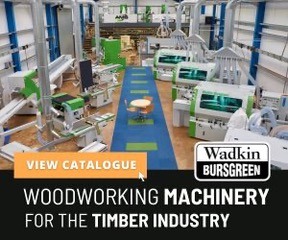With over 30 years experience manufacturing acoustic insulation for the construction and marine industries, the family-run, Telford-based company has recently invested £500,000 in developing and testing a new, stand-alone product range it calls AcousticArt.
“Three years ago, we had an idea to start creating stylish acoustic foam absorbers that architects could incorporate into places like cinemas and conference halls to reduce noise pollution. While the market is niche, there seemed to be demand for a bespoke design service that could transform a normal foam absorber into a piece of functional art,” explains AcoustaFoam production director, Carl Tranter.
Already experienced in manufacturing acoustic foam noise control products for the industrial sector, expanding into architecture seemed a logical next step. He adds: “Working with foam is what we do best. As a manufacturer, we can control the whole operation from product quality to lead times.”
AcoustaFoam has an established onsite reverberation testing facility that generates a full report on the noise absorption characteristics of a range of products and materials. A slick design option now completes the manufacturing cycle at Telford.
With its focus predominantly on product quality, AcoustaFoam needed to invest in the right technology with which to make AcousticArt a success.
“We looked at several printing solutions with a view to applying customised designs and images onto cloth-covered absorbers,” explains Carl. But, after a demonstration of the Anderson CoJet staged by RW Machine’s engineers, the search for the right machine promptly ended.
“There was a real buzz gripping the audience, which comprised customers as well as members of our own staff, once we’d seen what the machine was capable of,” says Carl.
Cojet ticked all the boxes. Acousta-Foam needed a machine that could print high-quality design onto a range of materials – including melamine foam because of its light weight and ‘O’ fire safety rating. Cojet’s ability to handle this material was a must – and AcoustaFoam also wanted it to work on large surface areas and a wide spectrum of shapes. Offering a range of absorber sizes up to 2500 x 1200mm and from 25 to 100mm thick, Carl Tranter and his team were very impressed that Anderson Cojet could work with even larger workpiece sizes when they needed it to.
The specific needs of AcoustaFoam formed the basis of a clear brief for makers Anderson to build a machine that incorporated important features like built-in primers on the machine’s eight print-heads; two further print head options are also available, plus a 10 x 5ft working table and 1440dpi high-speed printing capabilities. Trade magazine media, such as Furniture & Joinery Production, will have been printed at or below 300dpi using a much coarser resolution.
Inkjet print heads will overprint images up to eight times to build surface depth and texture while still covering around 20m2 per hour in normal print mode. Double UV print-head lamps cure inks almost immediately and imitative print images will convince both eye, and, where textures are concerned, also touch.
“Even with our specific tech-spec requirements,” says Carl Tranter, “the machine was built and installed within 12 weeks and as soon as it arrived, RW arranged for an Anderson engineer to be flown over to help us with the initial set-up and training.”
With news of the CoJet’s impending arrival and the birth of the new Acoustic-Art range, anticipation at the Telford workshop and showroom was mounting. “We had orders ready and waiting before the machine even arrived,” says Carl. “Everyone was so excited – we couldn’t wait to see what it would be able do once we had got our hands on it!”
David Thompson Rowlands at RW Machines asked one of the company’s existing and now loyal CoJet customers, Richard Love, to give AcoustaFoam a helping hand with its initial orders. “Once the machine was installed, we hit the ground running,” says Carl, “and already we are manufacturing often upwards of 120 absorber panels a week. We’re confident we will see a return on investment inside three months,” he adds.
A new 4000 sq ft showroom at Telford now houses the CoJet machine and more than 50 of the newest samples. Importantly, a dedicated new designer has been head-hunted and appointed to oversee the project.
Carl adds: “We’re already seeing a huge rise in enquiry levels and we’re really excited to see where this terrific machine can take us. We are confident that with RW Machines behind us, AcoustaFoam will be able to make the most sophisticated, design-led noise absorption products on the market.”
“Everyone is a potential customer when you own an Anderson CoJet ink jet printer”
“We are manufacturing often upwards of 120 absorber panels a week. We’re confident we will see a return on investment inside three months”








